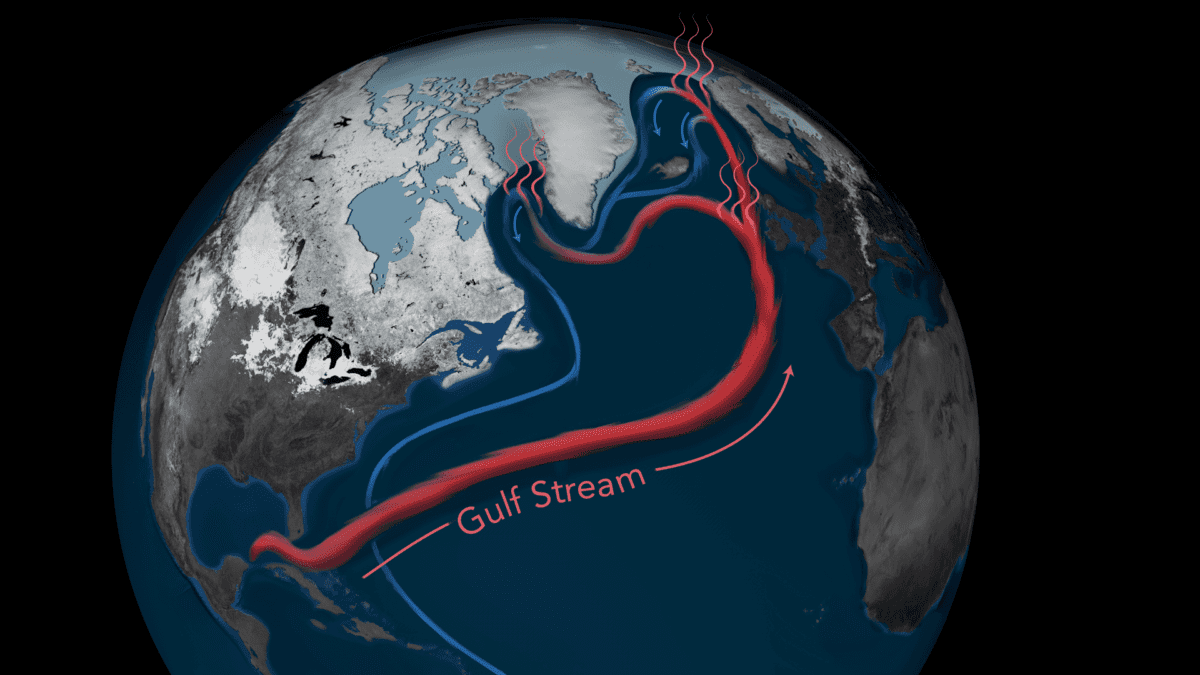North Atlantic ocean circulation shown on a world globe
The North Atlantic is a key juncture in the world ocean circulation system that has impacts on our climate. The Gulf Stream carries warm, salty water to the Labrador Sea and the Nordic Seas, where it releases heat to the atmosphere and warms Western Europe. The cooler, denser water then sinks to great depths to propel currents around the world and eventually circulate water back up to the Gulf Stream. In the mid-19th century, a long period of cooler climate, known as the Little Age, came to an end. Sea ice, ice sheets, and glaciers that had formed around the Arctic region began to melt, creating a huge natural tap of fresh water that gushed into the North Atlantic. This huge influx of fresh water diluted seawater on the ocean surface, making it lighter and less able to sink deep. That weakened the sinking of cold water and the amount of heat released to the atmosphere in the region. Today, Earth’s climate is warming, and even though sea ice in the region has diminished, the ocean circulation remains weak—possibly because Greenland’s Ice Sheet is thawing and releasing fresh water to the North Atlantic. (Illustration by Natalie Renier, © Woods Hole Oceanographic Institution)
Image and Visual Licensing
WHOI copyright digital assets (stills and video) contained on this website can be licensed for non-commercial use upon request and approval. Please contact WHOI Digital Assets at images@whoi.edu or (508) 289-2647.

